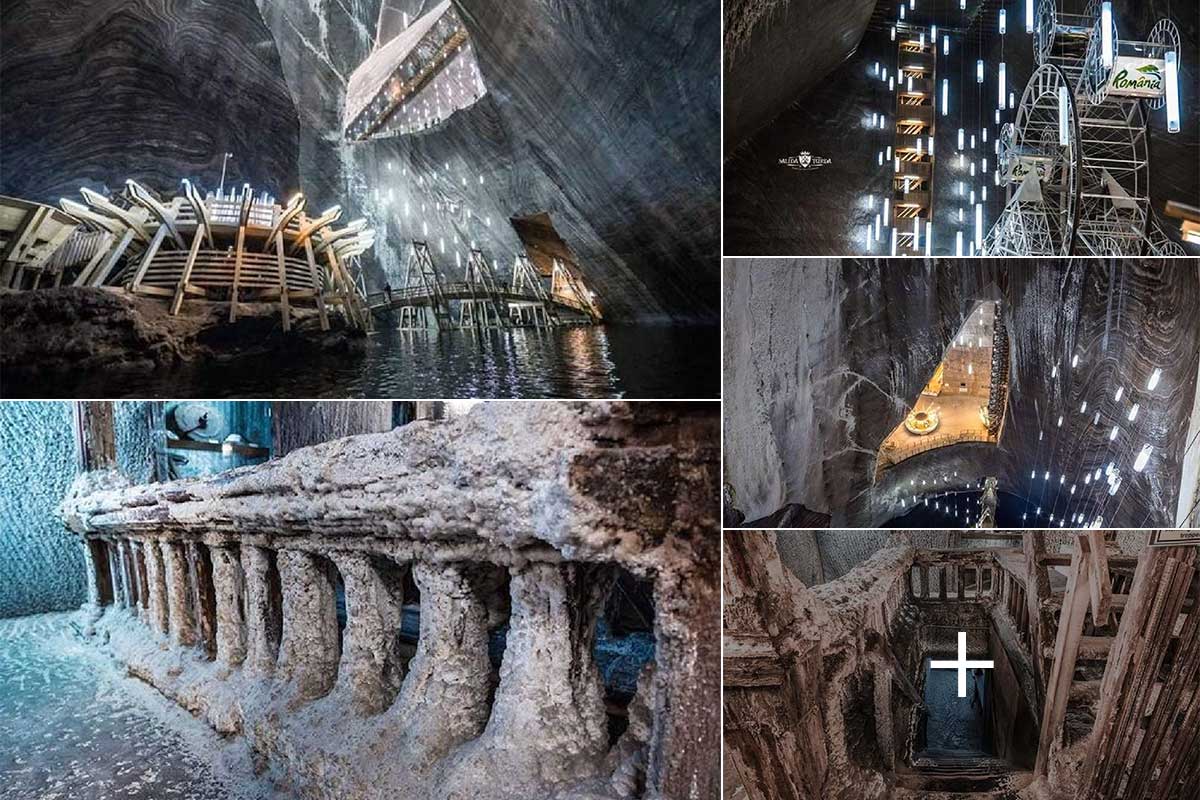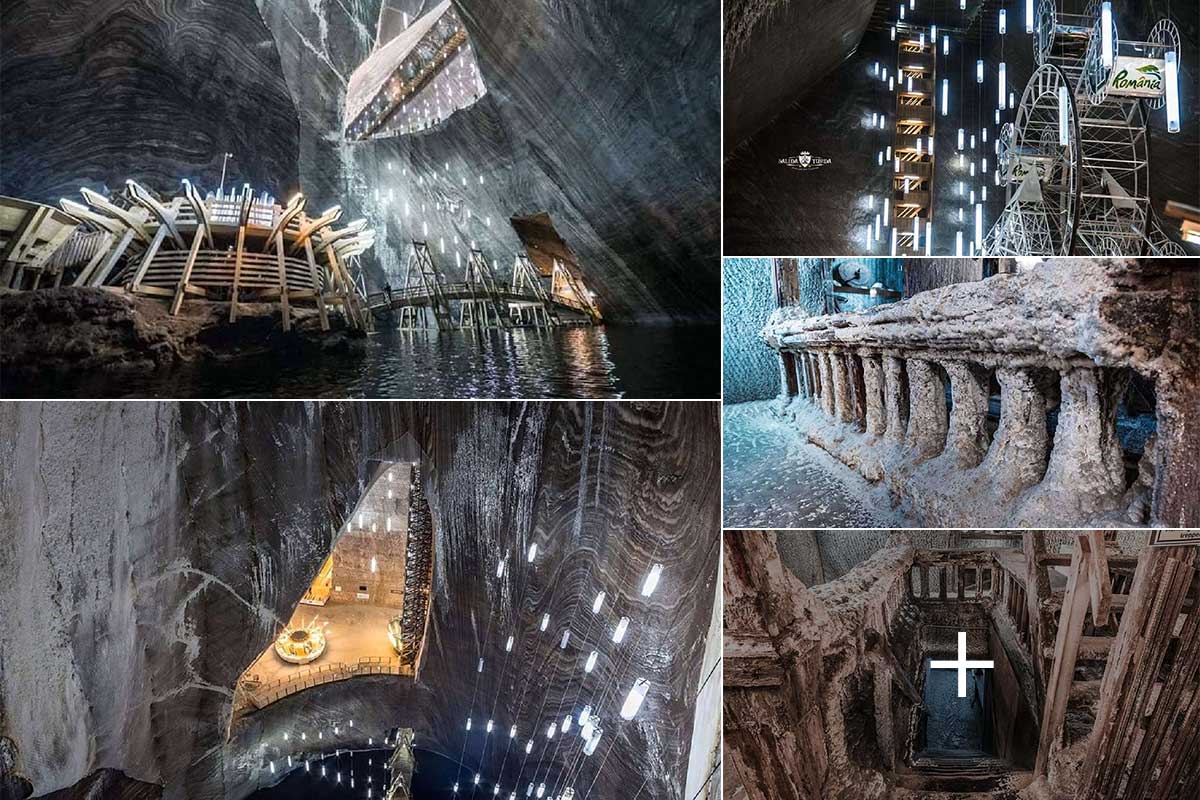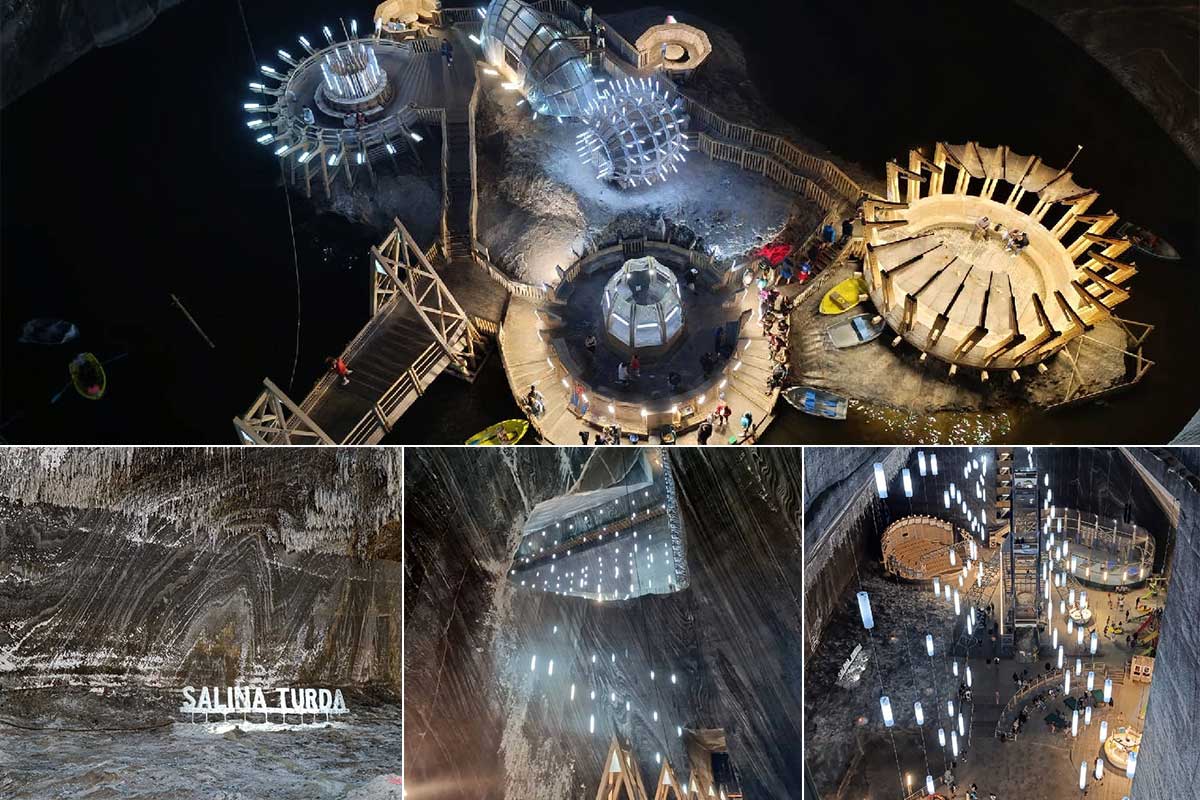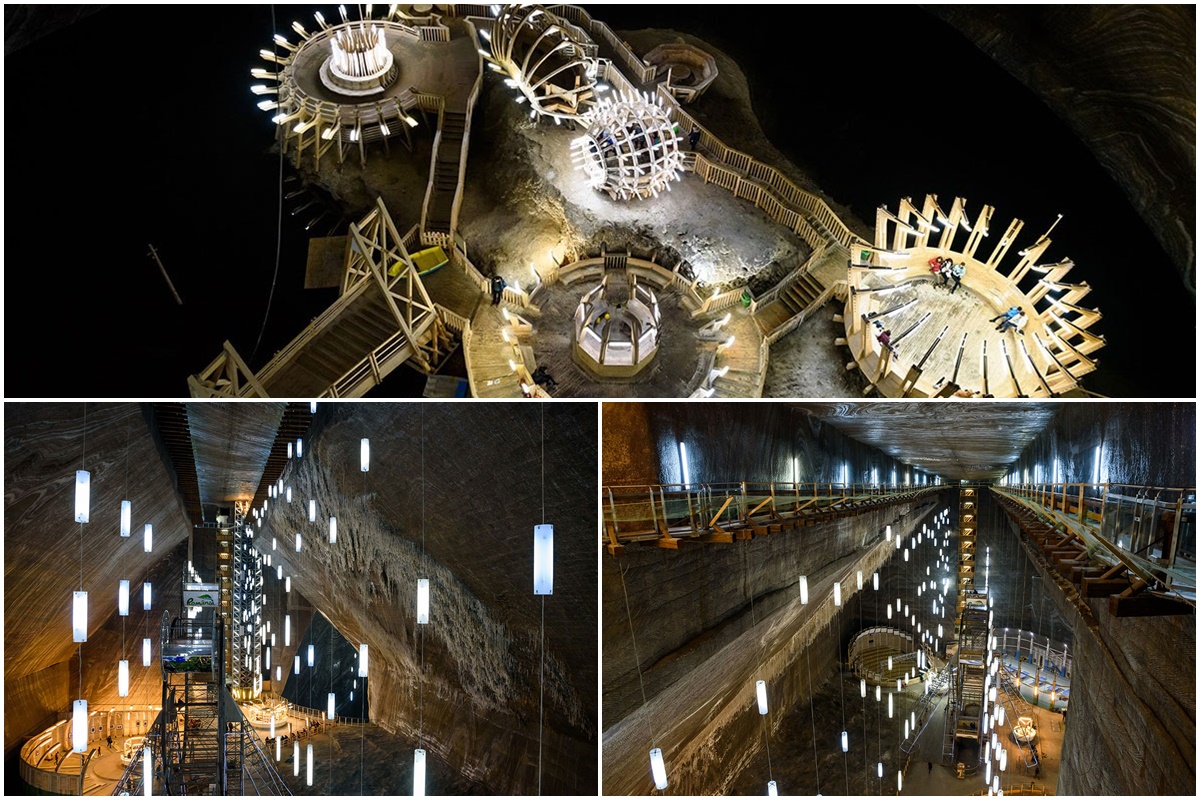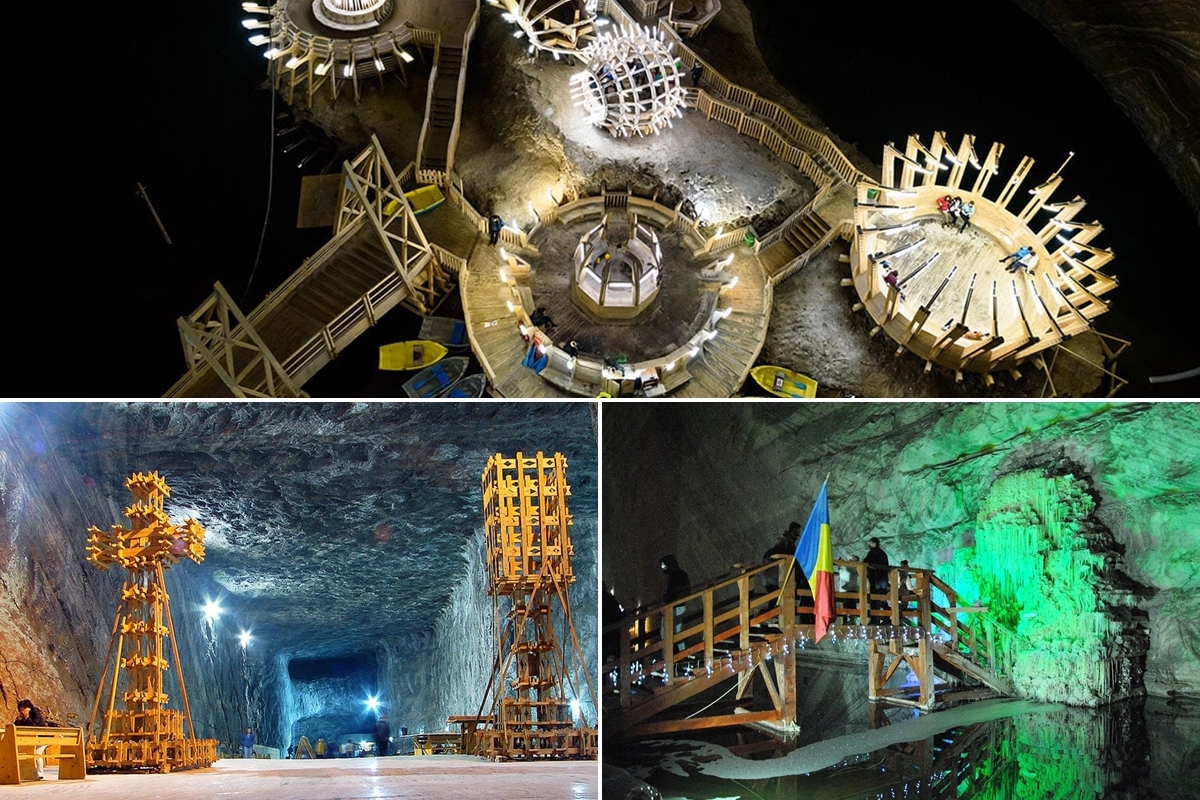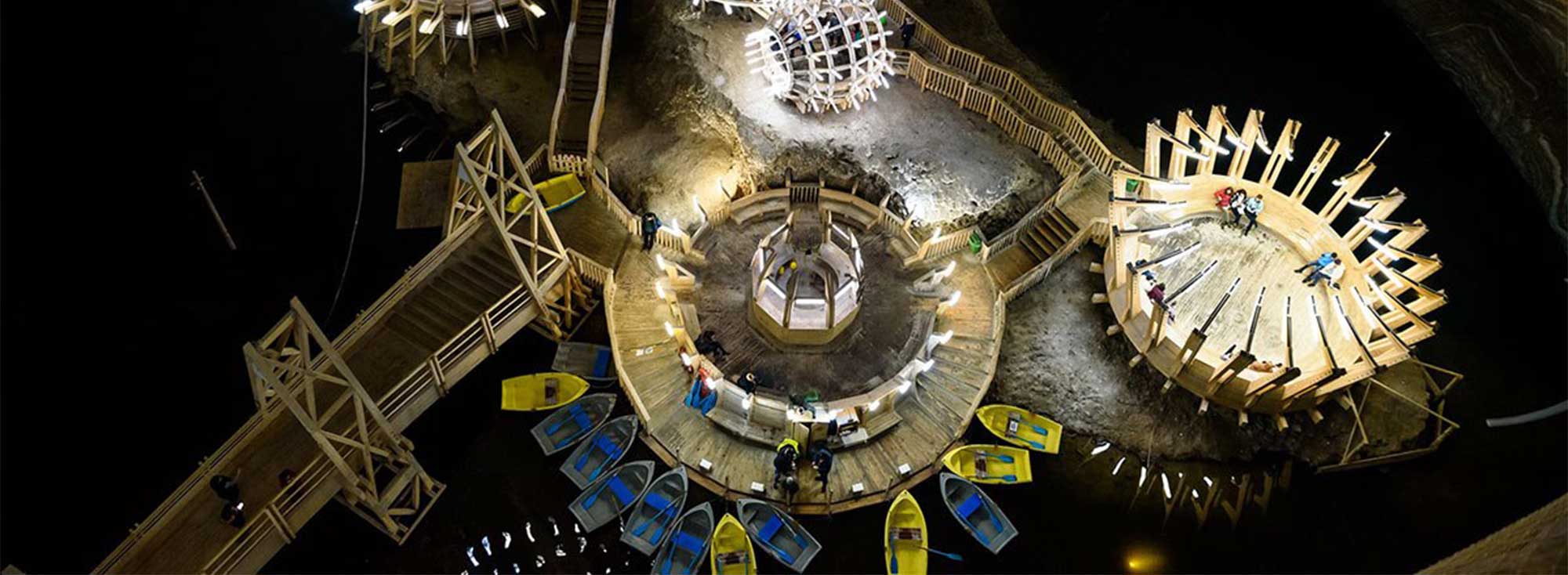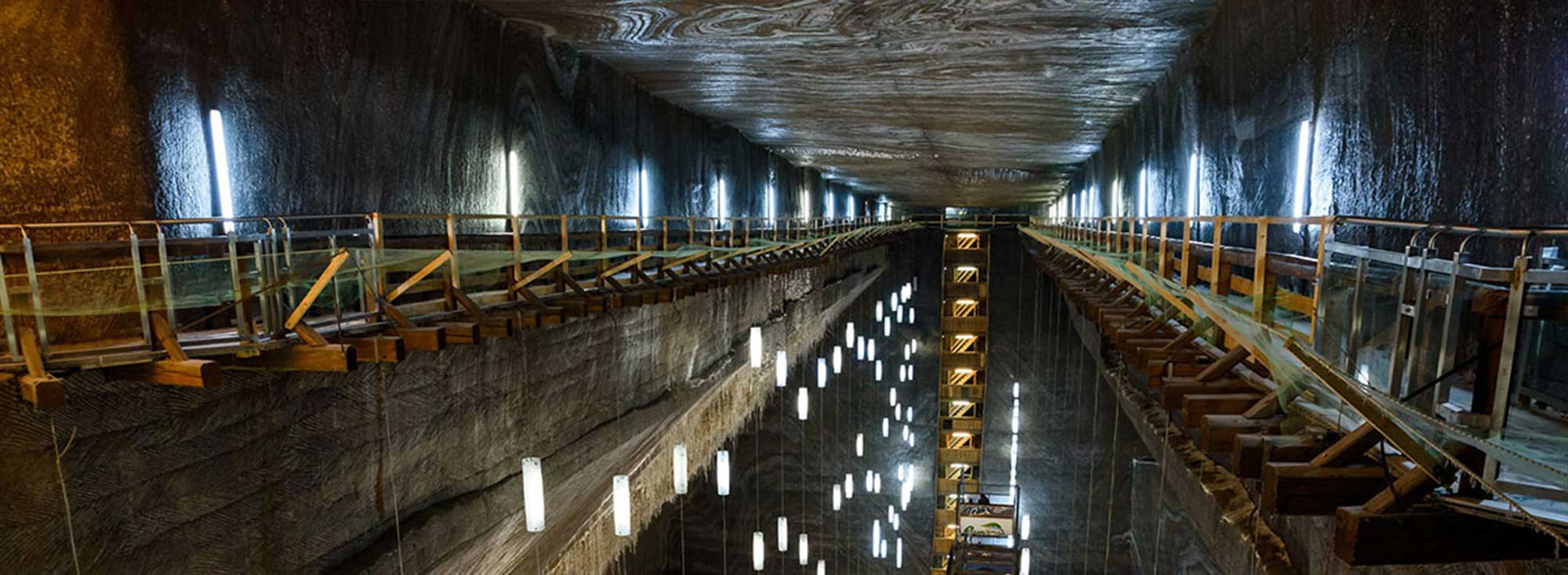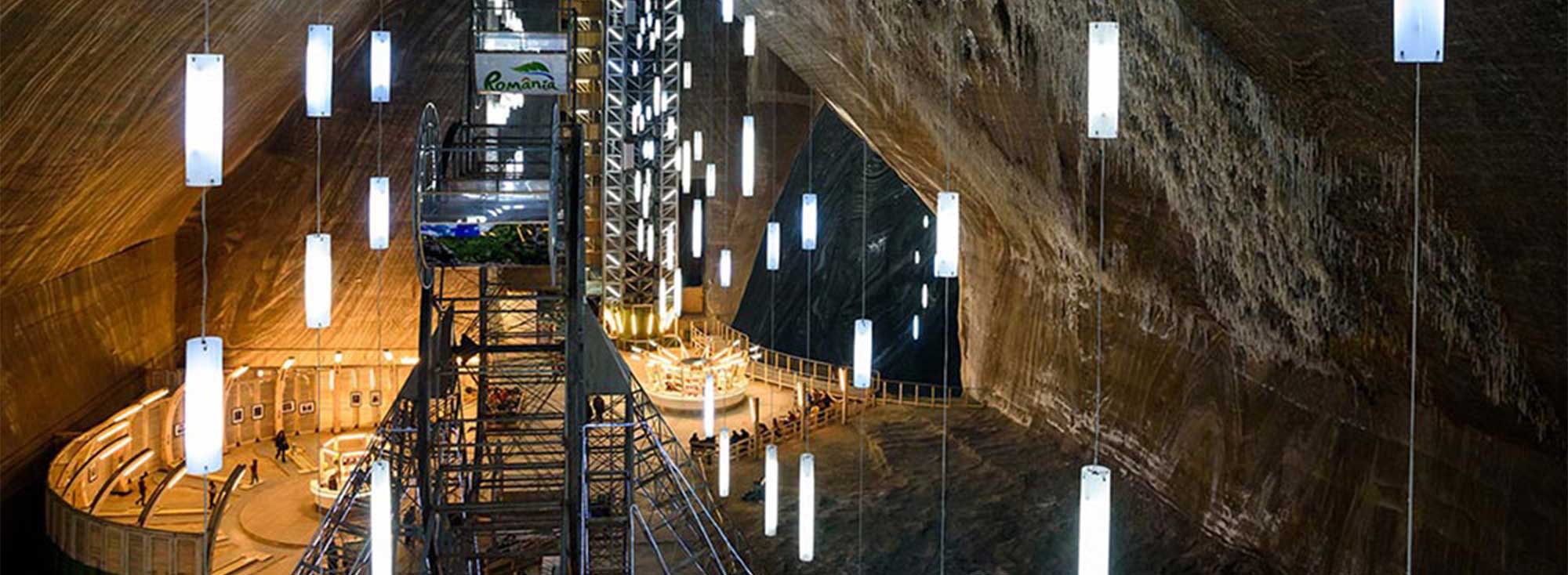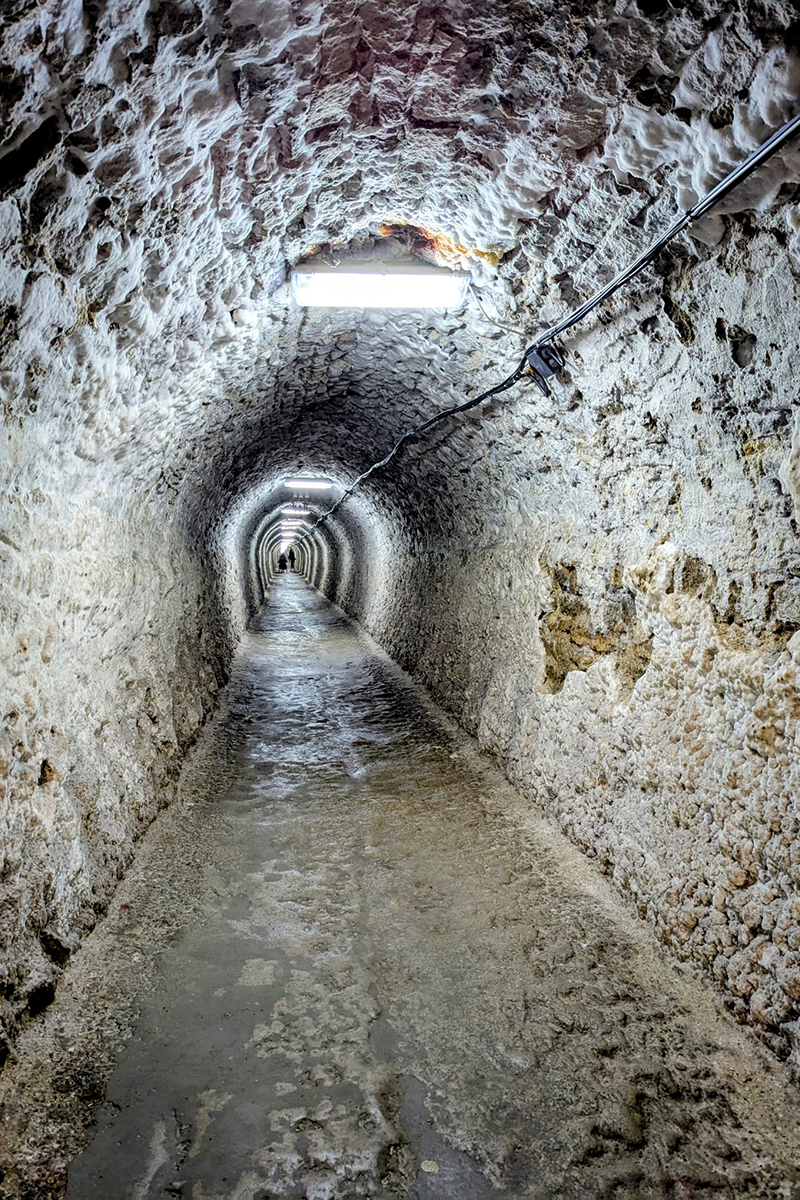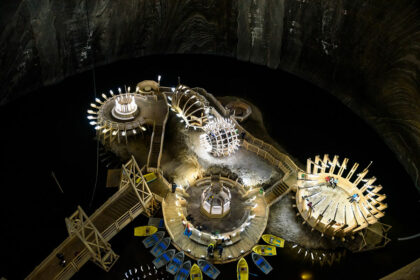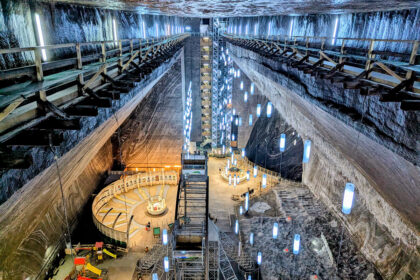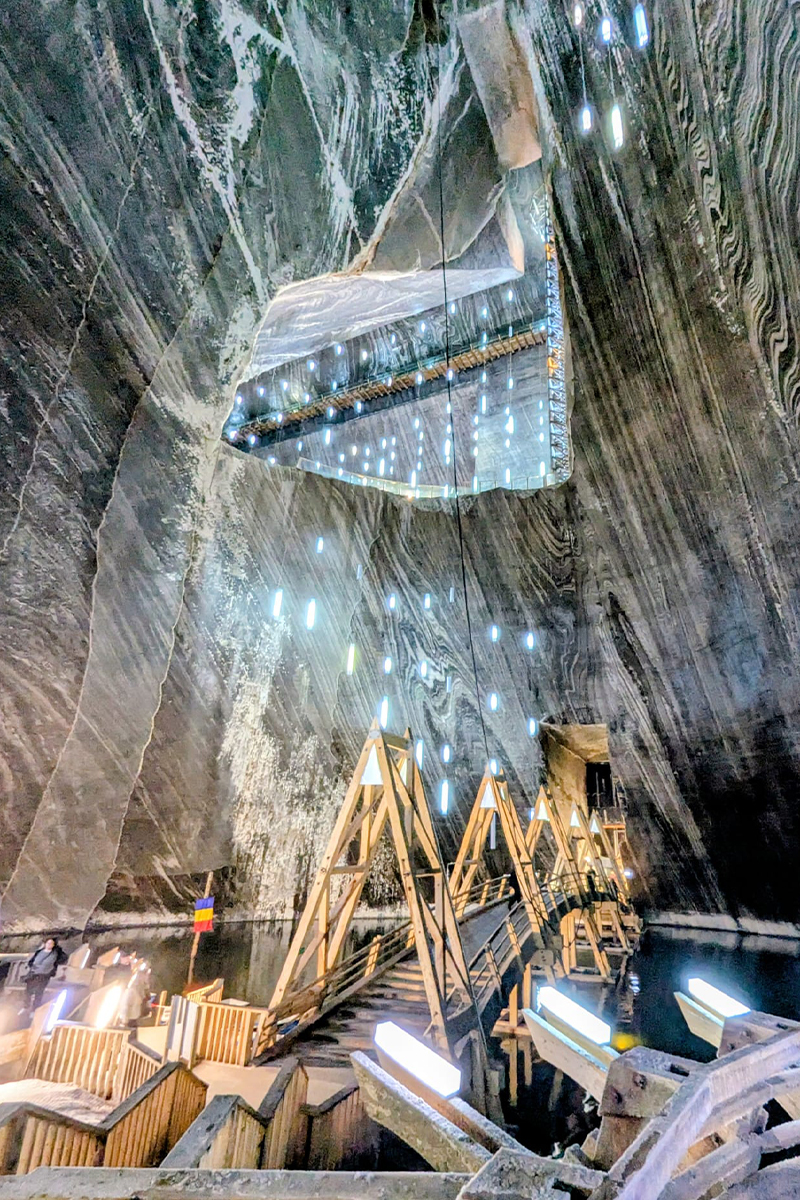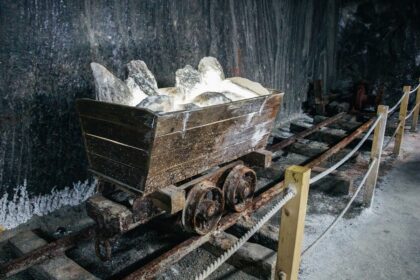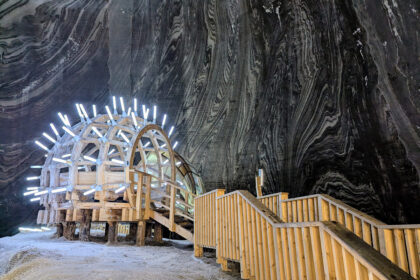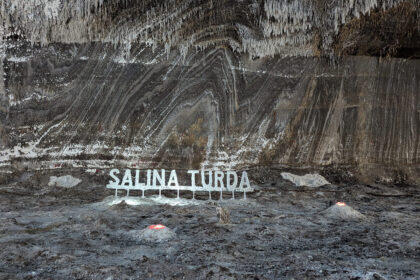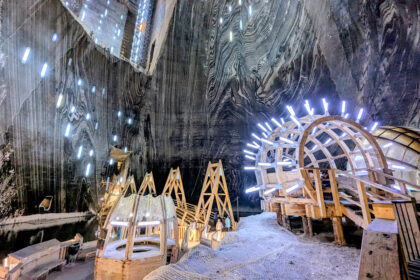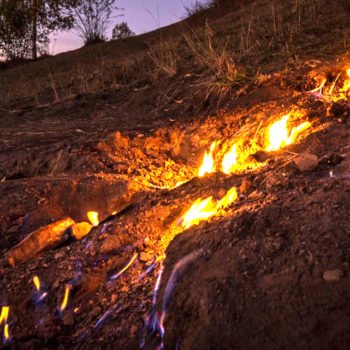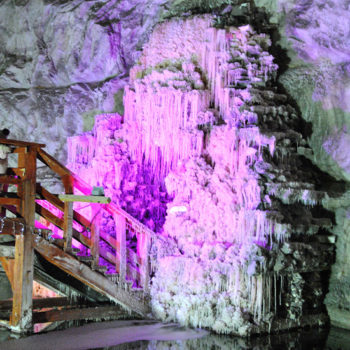Brief description: The Turda Salt Mine is located in the Durgău-Valea Sărătă area of Turda and is a true museum of the history of salt mining. The Turda salt deposit belongs to the western alignment, which develops starting from Maramureş, in the north, to the area of Sibiu, in the south. Ocna Dej, Sic, Cojocna, Valea Florilor and Ocna Mureş deposits also belong to the same alignment.
County: Cluj
Website: Salzbergwerk Turda
Images: Red Frog
More Information – History Present
The entrance to the salt pan (through the Franz Josef access gallery) was until 2010 from 54A Salinelor str. (Turda Nouă district), currently through the new and modern entrance from the Salina-Durgău tourist center (Aleea Durgău no. 7). Salina Turda is listed on the list of historical monuments in Cluj county.
The salt deposits in Transylvania (systematically exploited during the time at Ocna Dejului, Cojocna, Turda, Ocna Mureș, Ocna Sibiului and Praid) were formed 13.5 million years ago, in a shallow sea and under a tropical climate, very hot. The salt layer extends everywhere in the subsoil of Transylvania, having a thickness of about 400 m. The thick layers of sediments deposited later on top of the salt layer pressed with an immense weight the malleable (plastic) layer of salt, which sought weaker areas of the crust terrestrial at the edge of Transylvania, where it rose in the form of mushrooms with heights of over 1,000 m, often reaching even the surface of the earth (the case of the towns with old salt mines mentioned above). At Turda, the salt mushroom has a height of about 1,200 m (researched through relatively recent drilling).
The exploitation of salt from Salina Turda was definitively stopped in 1932, due to the primitive technical equipment, the low yield and the competition from other Transylvanian salt pans.
In 1932, there were the following salt mines at Salina Turda (from south to north):
– mina Iosif (1740-1900)
– mine Rudolf (1864-1932)
– Mina Terezia (1690-1880)
– Ghizela mine (1857-1932)
– the Anton mine (beginning of the 18th century-1862).
Present
Salina Turda reopened in 1992 (for touristic and curative purposes) and can be visited all year round. In 2017, the former Iosif, Rudolf, Ghizela and Terezia mines could be seen. Also worth seeing are the well-preserved medieval machinery from the mine (unique in Europe), such as the smithy, the smithy and the salt mill. Also the Altar (carved in the salt wall) and the Ladder of the Rich (a filigree wooden staircase).
With the financial support of the European Union, in 2009 extensive works were carried out to develop the Turda Salt Flats, for touristic and curative purposes. The inauguration took place in January 2010, after 2 years of works and 6 million euros invested. Salina Turda currently has treatment rooms, an amphitheater, gyms, but also a “panoramic wheel”, from where you can admire the stalactites in the salt.
Between 2012 and 2014, a connecting tunnel between the Terezia mine and the Iosif mine, 50 m long, was built in order to include the Iosif mine, which was not open to public access until now, in the tourist circuit.
We would like to thank Mr. Iercosan Marian for sending us these wonderful pictures from September 24, 2025.
Our UiR database: You can also visit and explore this nearby ...Zur Suchfunktion!








